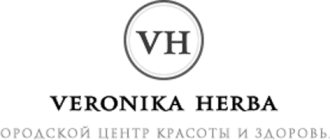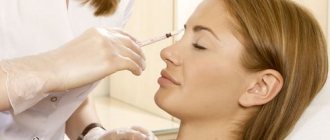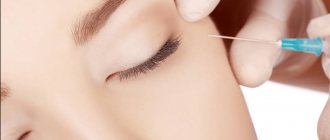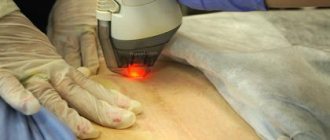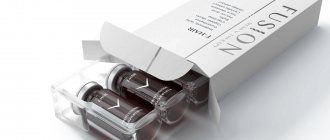A woman’s beauty is emphasized by luxurious, well-groomed hair. And although hair is not so important for men, each member of the stronger sex is afraid of becoming bald. In addition, strong, beautiful hair, as an indicator, demonstrates excellent health. Therefore, the deterioration of their appearance always alarms the patient.
Widely advertised cosmetics do not always give the desired result. The hair continues to remain dull, split ends, fall out, and the formation of dandruff does not stop...
In all such cases, the help of a cosmetologist is necessary and, possibly, mesotherapy for the scalp. This technique is a reliable way to improve the condition of your hair.
What is mesotherapy for hair
The essence of mesotherapy is the subcutaneous or intradermal injection of biologically active components of special cocktails that normalize the condition of the hair and scalp and achieve a therapeutic, rejuvenating and preventive effect.
Medicines injected directly into the area of the hair follicle provide it with the substances necessary for hair growth, activate metabolic processes, and improve blood supply to the hair follicles.
No less effective is the effect of the introduced cocktails on the scalp:
- · metabolic processes are activated;
- Toxic substances are more actively removed;
- · oxygen saturation of cells improves;
- · Accelerates the regeneration (renewal) of skin cells.
Indications for mesotherapy of the scalp
Many hair and scalp problems can be solved with mesotherapy. The main indications for its implementation:
- · various types of alopecia (baldness);
- · dry and brittle hair;
- Seborrhea on the scalp;
- · thinning of hair structure and split ends;
- · itching of the scalp;
- · dandruff;
- · early gray hair;
- · ringworm, or trichophytosis;
- · damage to the hair by any procedures (perm, coloring, frequent use of a hair dryer, etc.).
Devices for barophoresis and intrafollicular infusion
Not long ago, devices for barophoresis , in which active substances are introduced into the skin thanks to the supersonic speed of an air stream and a high-speed flow of micronized drops of a solution supplied to the skin under pressure. Sometimes this method is called the gas-liquid mesotherapy method.
The essence of the action is this: using a device and a nozzle with a jet micronozzle, compressed gas is accelerated to supersonic speed. Through a nanoneedle built inside the nozzle, liquid flows under pressure and enters this flow, and thus a finely dispersed gas-liquid flow is formed at a speed of 200–300 m/s. Thus, the transdermal route of substances into the skin “interior” is ensured by several factors. Firstly, the droplet size in this gas-liquid method is from 1 to 5 micrometers. Secondly, the drop speed is 300 meters per second. Thirdly, the pressure on the skin is up to 1 atmosphere.
Devices for intrafollicular infusion are interesting because, in addition to pressure and finely dispersed supply of the drug (thin jets 50 microns thick, which is less than the diameter of the skin pores), they use vacuum.
The device is equipped with plastic disposable hollow tips with two micro-nozzles at the end. A rotating micronozzle supplies the solution through channels in the walls of the nozzle into these micronozzles. Two jets from there hit each other in a horizontal position under increased pressure (10 bar). In addition, these two fluid streams rotate. Thus, the nozzle, which is in close contact with the skin thanks to the vacuum, combines the effects of local low atmospheric pressure and rotating fluid flows around its longitudinal axis, which “hit” the captured skin fold. This ensures a “win-win” match between the openings of the skin pores and the nozzle of the nozzle.
How is mesotherapy performed?
When preparing for the procedure you should:
- · for 3 days before mesotherapy, after agreement with the attending physician, do not take medications that can affect blood clotting (anticoagulants, non-steroidal anti-inflammatory drugs);
- Wash your hair before the procedure;
- · Comb your hair thoroughly;
- · do not apply care products (mousses, varnishes, etc.).
Depending on the method of introducing the cocktail into the skin, mesotherapy can be manual or hardware. On the scalp, manual mesotherapy is more often used, in which the cosmetologist introduces the drug manually using a syringe, and independently regulates the depth of introduction of the cocktail.
In hardware mesotherapy, the drug is administered using a special “gun” or mesoinjector. Using the device settings, the cosmetologist sets the depth of injection of the product and the dose. This is a faster and less painful way. It is used to treat large areas of the client's skin.
The cosmetologist first treats the skin on the head with an antiseptic. If the patient's pain threshold is low, an anesthetic is used: lidocaine or procaine is mixed with a mesotherapy cocktail.
During the procedure, the client can be in a sitting or lying position. The drug is administered using a disposable syringe with a special disposable very thin (diameter up to 0.3 mm) needle to a depth of 0.5-2 mm, with a distance between injections of 1-2 cm over the entire surface of the head. At the end of the procedure, the skin is re-treated with an antiseptic. The duration of the procedure is about 1 hour.
To obtain the most pronounced effect, it is recommended to carry out a full course of mesotherapy, consisting of 10-12 procedures. The order of their implementation is as follows: 4 procedures with 7-day intervals, 4 sessions with 2-week breaks, 3-4 injections of the drug with intervals of 3 weeks. To consolidate the effect, after this you can carry out 1 procedure every 1-3 months.
Mesotherapy requires very precise implementation of the technique. In the absence of special needles for administering the cocktail, the skin is injured and the patient experiences pain.
If the drug is administered too deeply, the effect will not be achieved, since the components of the cocktail will enter the bloodstream, spread throughout the body, and will not have an effect on the hair follicles. Deep injection does not exclude trauma to the hair follicles.
It is also wrong to introduce a large volume of cocktail into one point. If the injection is carried out too quickly, the drug will not be deposited, but will leak out.
A correctly performed procedure does not cause pain after it is performed.
Recommendations for the next 2-3 days after the procedure:
- · do not wash your hair;
- · do not use hair care products;
- · do not use hard hairpins;
- · do not perform any manipulations with hair (styling, blow-drying, etc.);
- · Refuse to drink even minimal doses of alcohol.
Devices for oxymesotherapy
Another popular method of non-injection mesotherapy is oxymesotherapy (introduction of low molecular weight active drugs into the deep layers of the skin using oxygen pressure). The method is based on the effect of a stream of pure (96–98%) oxygen supplied under specially calculated pressure on the skin, which exceeds atmospheric pressure (to bring the active substances to the dermis, a pressure of 2.2 bar is required). There is a powerful saturation of tissues with oxygen, which at the cellular level activates and regulates all life processes.
Interestingly, oxygen is not only capable of penetrating into deep layers, but is also a kind of conductor for low-molecular components of cosmetic products. In this case, by analogy with classical mesotherapy, the active drug accumulates directly at the border of the basal layer and the dermis, creating a local “reserve” of the drug, which is then gradually consumed, redistributed throughout the surrounding tissues.
However, it is worth considering that the percentage of penetration of active substances into the dermis with this method is slightly lower than when using the electroporation method, and for effective work it is necessary to use special low-molecular serums developed for oxygen mesotherapy procedures.
This type of equipment works quite simply: air is drawn into the device by a compressor, passes through two cleaning filters and is already cleared of impurities in the generator. At the outlet, pure oxygen is supplied under pressure through a manipulator in two modes: pulsed and constant.
Result
A noticeable result is achieved relatively quickly - after 2-3 sessions, hair growth and condition improves.
Treatment of alopecia is especially successful when its cause is eliminated. To identify this cause, an examination by an endocrinologist and trichologist is sometimes necessary. Mesotherapy is most effective for reactive baldness (provoked by some factor). Mesotherapy relieves dandruff and painful itching on the scalp. In some cases, the cosmetologist alternates different cocktail compositions for greater effectiveness. The effectiveness and safety of the procedure quickly made it popular among patients.
Devices for photophoresis (laser phoresis)
You can also introduce cosmetic preparations into the deep layers of the skin using athermal (low-intensity) laser radiation (LILI). This method is called photophoresis. Therapeutic lasers of the red and near-infrared spectrum are used as a source of light radiation (their effect increases the permeability of cell membranes), the radiation intensity of which does not exceed 30 mW/sq. cm. The maximum wavelength for photophoresis is 890 nm.
Using photophoresis, only drugs with ultra-low molecular weight (up to 40–60 kilodaltons) can be administered. However, this method has become quite popular for the administration of low molecular weight hyaluronic acid preparations and has even been called “laser biorevitalization”, since the athermic laser (in addition to ensuring the transport of the active substance into the skin) stimulates the activity of macrophages, accelerates the proliferation of fibroblasts and stimulates microcirculation, which in combination with hyaluronic acid acid gives a high effectiveness of the technique, comparable to injection biorevitalization procedures.
In addition to specialized techniques, combined methods are also used for non-invasive mesotherapy, for example, the dermoporation method.
The combination of electroporation and electrophoresis led to the creation of a new method - dermoporation , when electroporation opens interstitial (intermediate between adjacent tissues) and intercellular channels, and electrophoresis provides an additional electrical impulse for the movement of drugs into the intercellular space of the dermis. Having reached the peak point of electrical intensity, such devices switch from electroporation to electrophoresis, thereby, as it were, “pushing” the active substances deep into the skin.
Requirements for medications, cocktails
Buy cocktails and preparations for mesotherapy, product catalog.
Initially, the cocktails included only allopathic drugs. In recent decades, homeopathic medicines, organomedicines and oligosols have been increasingly used.
For procedures, water-soluble drugs are used that are approved for subcutaneous, intramuscular and intravenous administration.
Mesotherapy can be carried out with one drug (monotherapy) or in cocktails.
- The components of the cocktail must be physically, chemically and pharmacologically compatible.
- If sediment, turbidity, or opalescence of the cocktail occurs, injections should not be performed!
- The number of active ingredients in the cocktail should not exceed three to minimize the occurrence of adverse reactions.
Cocktails include local anesthetics; to extend the duration of action (prolongation) of existing drugs. In addition, drugs of the caine series (procaine, novocaine) have their own therapeutic effect.
- Cocktails are prepared immediately before the procedure! Cocktails cannot be stored.
- The volume of the cocktail is determined individually.
- The maximum permissible volume of preparations when working with the face, neck and décolleté is 4-6 ml, for the body 10-15 ml.
Requirements for asepsis and antisepsis
- When performing mesotherapy procedures, it is necessary to strictly observe the rules of asepsis and antiseptics.
- You should work with gloves. The doctor must be vaccinated against hepatitis B.
- The main antiseptic for treating the patient's skin is Chlorhexidine Bigluconate 0.05%.
- After treating the mesotherapy field, the remaining antiseptic solution is removed from the skin with a sterile napkin.
